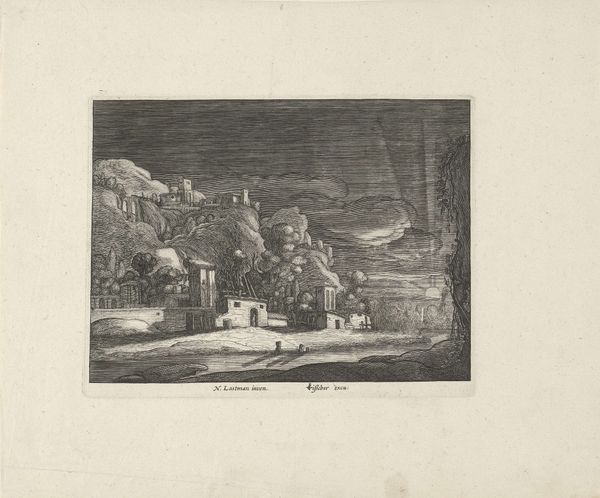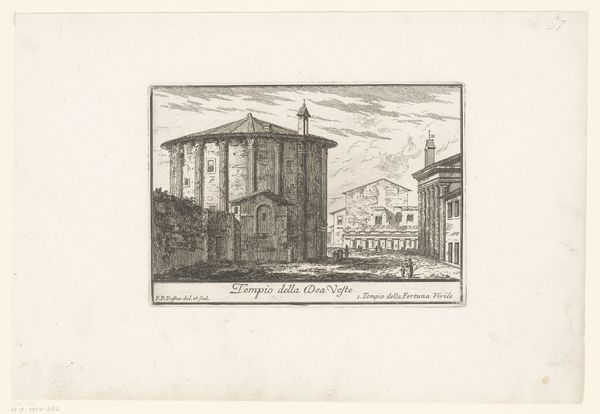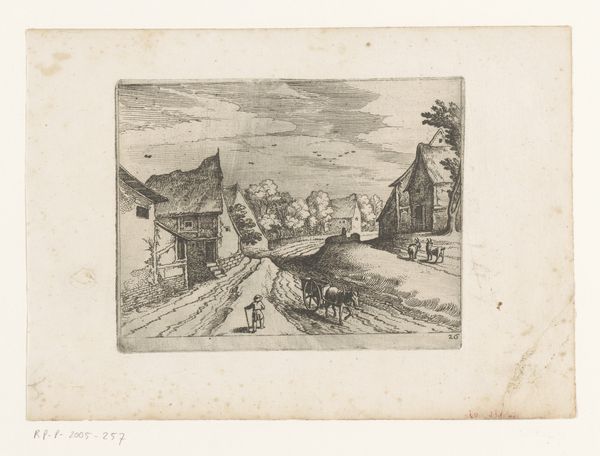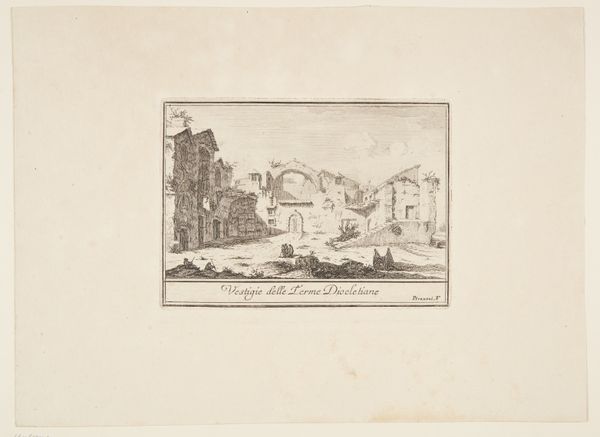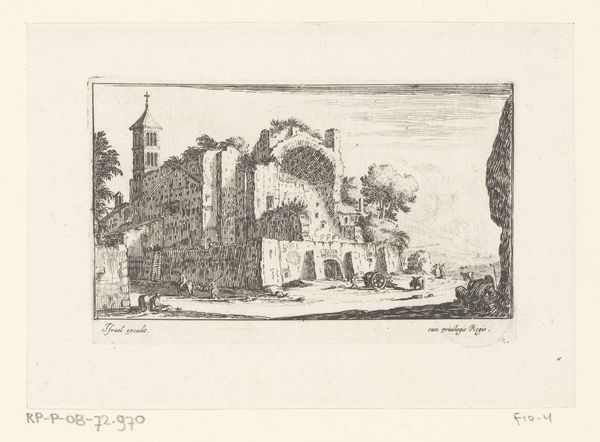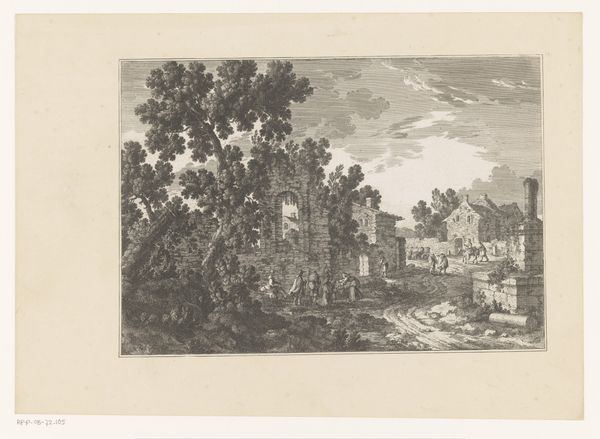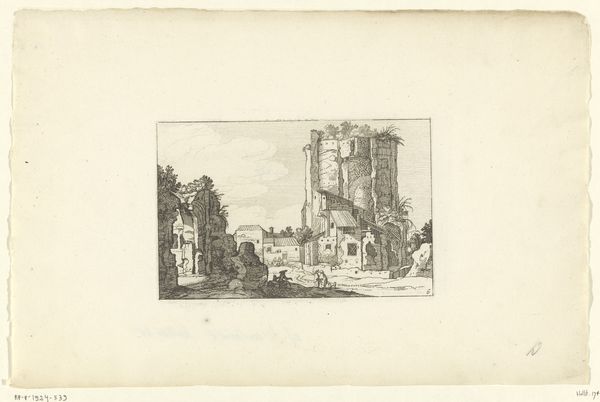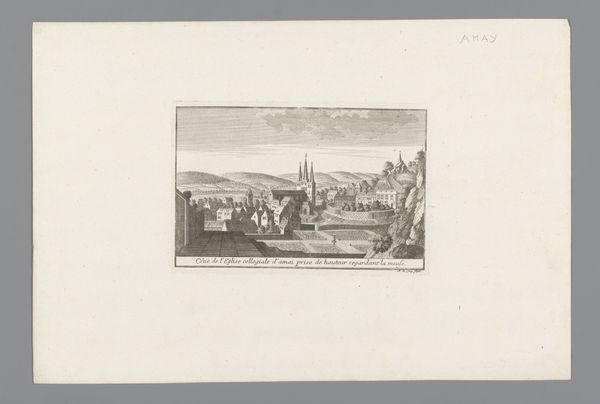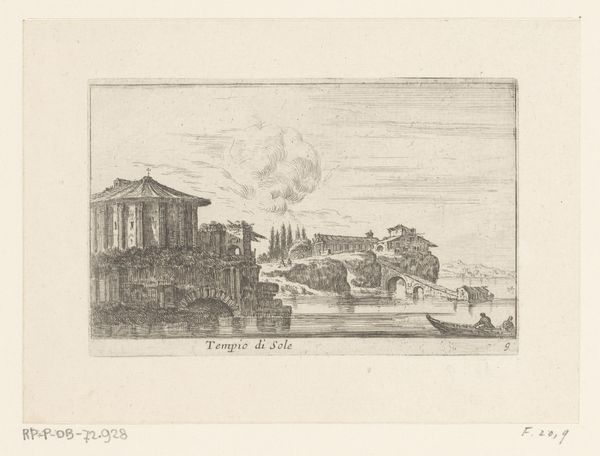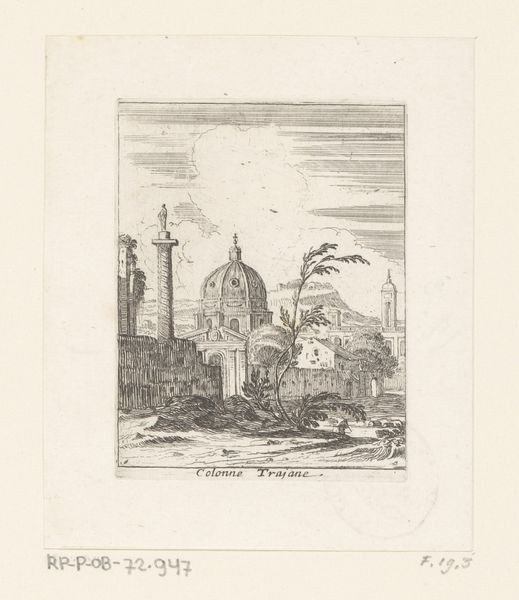
engraving
#
dutch-golden-age
#
landscape
#
cityscape
#
engraving
Dimensions: height 117 mm, width 138 mm
Copyright: Rijks Museum: Open Domain
Jan Veenhuysen made this print of the Waalse Kerk and the Walenpleintje in Amsterdam sometime in the 17th century. It's an etching, meaning the image was incised into a metal plate, likely copper, with a sharp tool called a burin, and then printed. Look closely, and you can see how the linear quality of the print is directly related to the process of its making. The dense, cross-hatched lines create the dark tones of the architecture, while sparser marks suggest the sky and the figures populating the square. The print would have been made in multiples, and sold to a growing urban population interested in images of their surroundings. It’s a reminder that even seemingly straightforward depictions of city life are shaped by the labor and skill involved in their production, and the social and economic context in which they were created. It challenges our ideas of art history by looking at the modes of production that made the artwork possible.
Comments
No comments
Be the first to comment and join the conversation on the ultimate creative platform.
